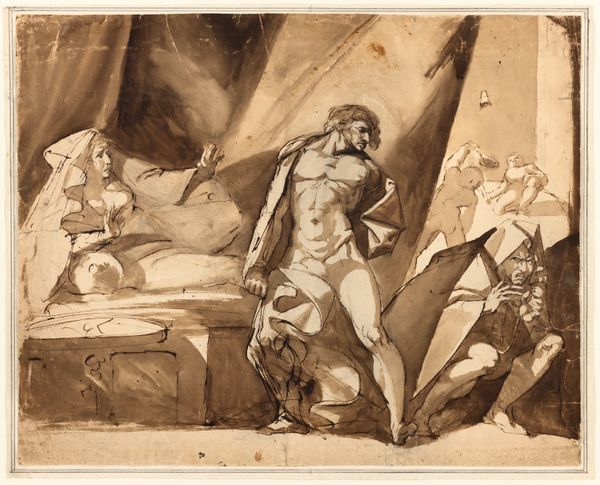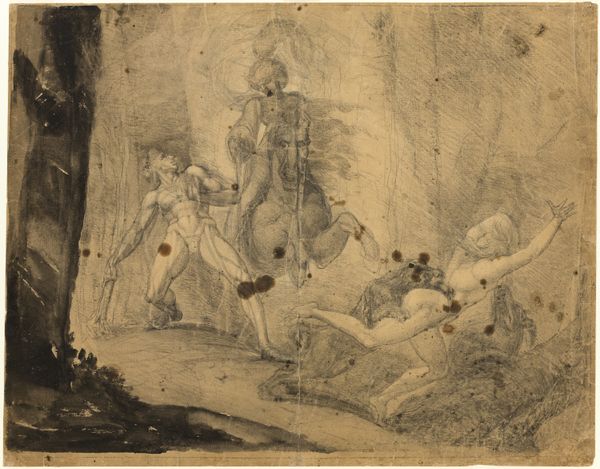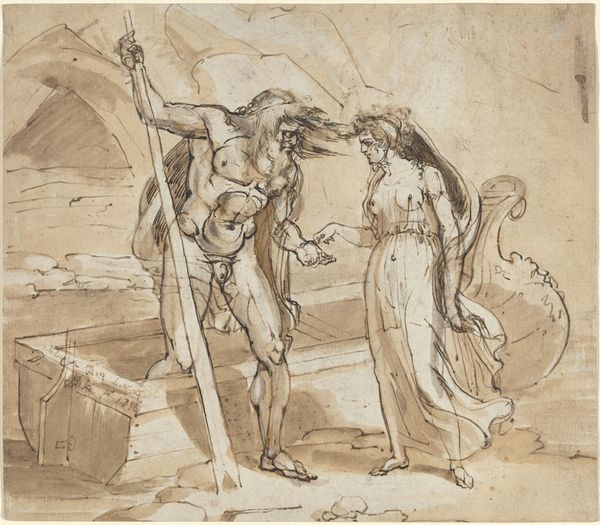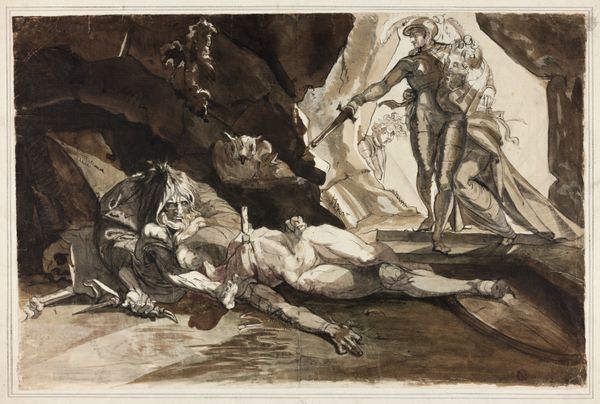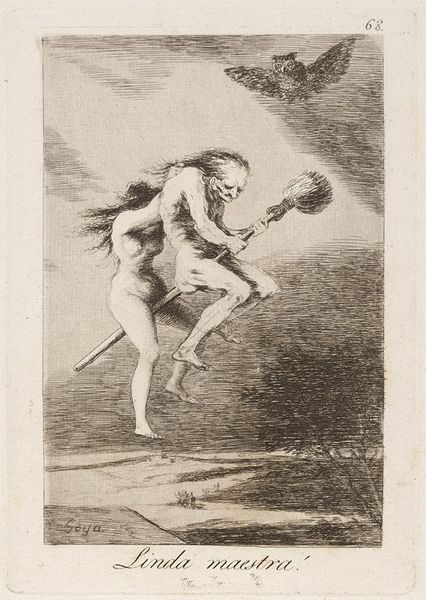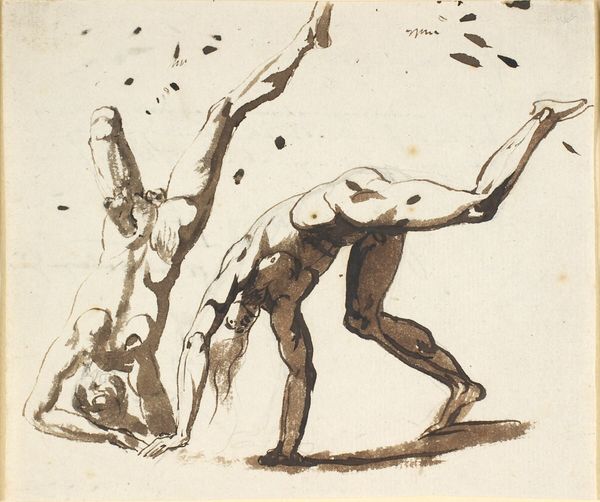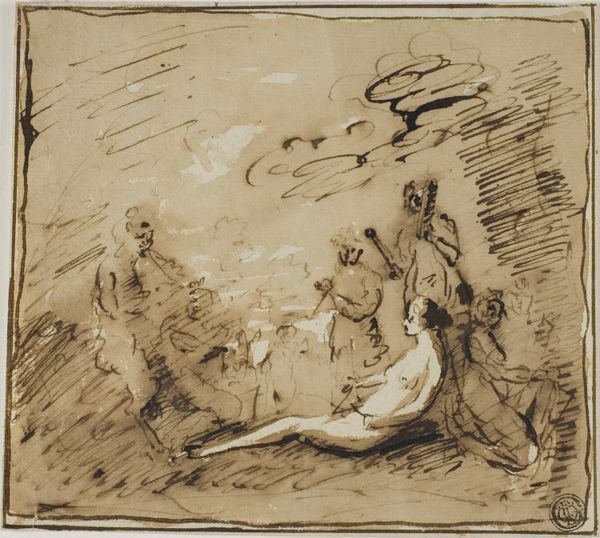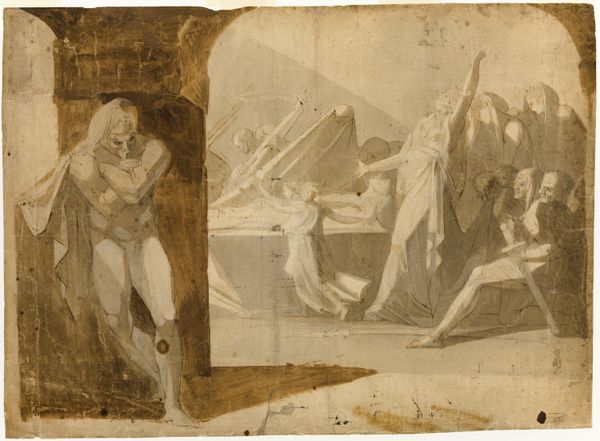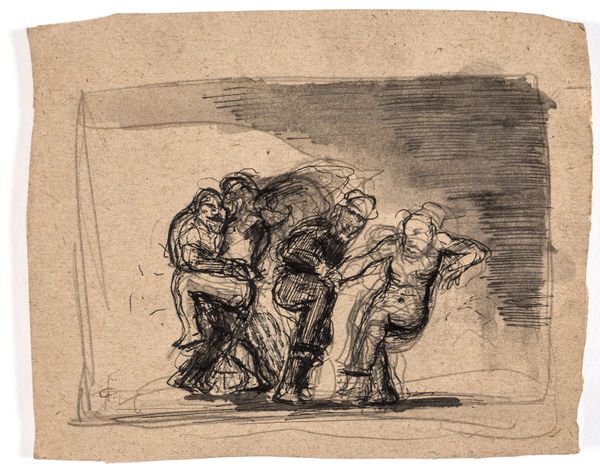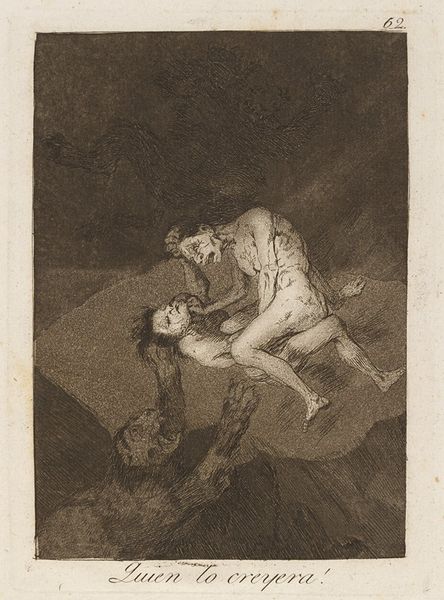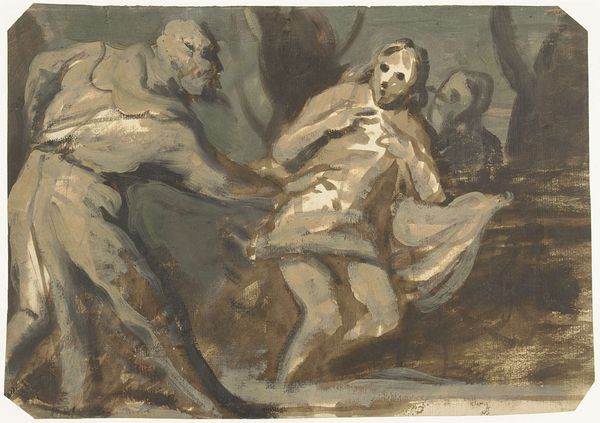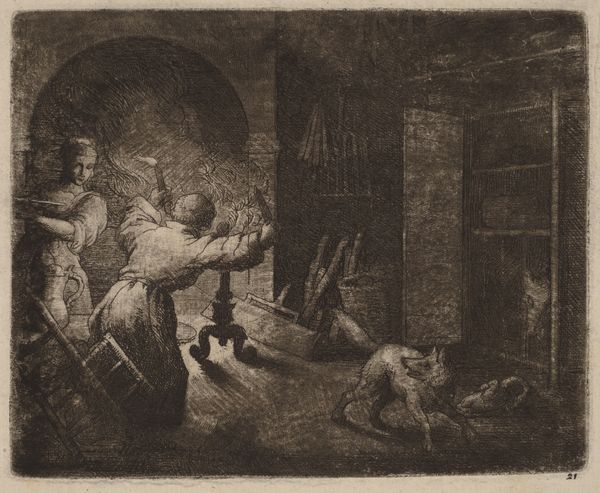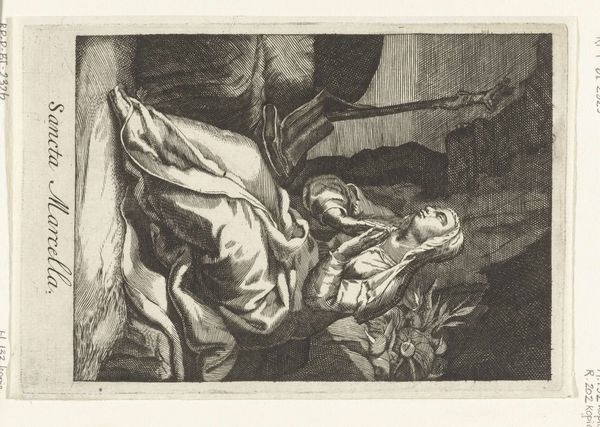
drawing, ink
#
drawing
#
neoclacissism
#
narrative-art
#
figuration
#
ink
#
history-painting
Dimensions: 122 mm (height) x 147 mm (width) (bladmaal)
Curator: This ink drawing, "Hamlet hos sin moder," dating from 1776-1779 by Nicolai Abildgaard, depicts a scene of high drama. The setting is sparse, but the figures... what's your initial read? Editor: Foreboding. The monochrome palette intensifies the sense of unease. Notice the tension between the rigid, almost spectral figure on the left, versus the flailing Hamlet, juxtaposed with his mother's cowering stance on the right side. Curator: Precisely. Abildgaard, a key figure in the Neoclassical movement in Denmark, presents us here with a powerful moment from Shakespeare's Hamlet. We can appreciate his mastery of line and form, channeling dramatic energy into a simple but forceful composition. Observe how the linear composition divides the space rhythmically with only vertical or diagonal directional emphasis. Editor: And it is Hamlet who embodies this conflict most acutely. The raised index finger... is he accusing her of betrayal? The ghost hovers like an ominous specter and sentinel to a crime as the guard with spear indicates justice. Curator: Undoubtedly, this depiction focuses on the encounter with the ghost of Hamlet's father. We can analyze it as Abildgaard engages with broader Neoclassical ideals: a focus on moral instruction through narrative. Observe, though, how it transcends mere illustration. The psychological complexity conveyed through posture and gesture is compelling, regardless of the viewer's knowledge of the play. Editor: It makes me wonder how contemporary audiences interpreted the Queen's position in this scene, though. We know Gertrude as Hamlet's mother, a key symbol in this familial story, but what would she mean to people at the time this piece was created? This could lead to numerous interpretations of women's positions in family narratives at the time... Curator: An excellent point. While remaining devoted to his lines and forms, we're inevitably pushed beyond Neoclassical idealism to the deeper social symbolism embedded within a specific historical and social time. Editor: It underscores the narrative's enduring power—to use its symbols to create ongoing dialogue on family and tragedy and all it implies, don't you think? Curator: Agreed. In its formal intensity and iconographic richness, Abildgaard's work still moves, still prompts us to think about morality, action, and its endless echo.
Comments
No comments
Be the first to comment and join the conversation on the ultimate creative platform.

